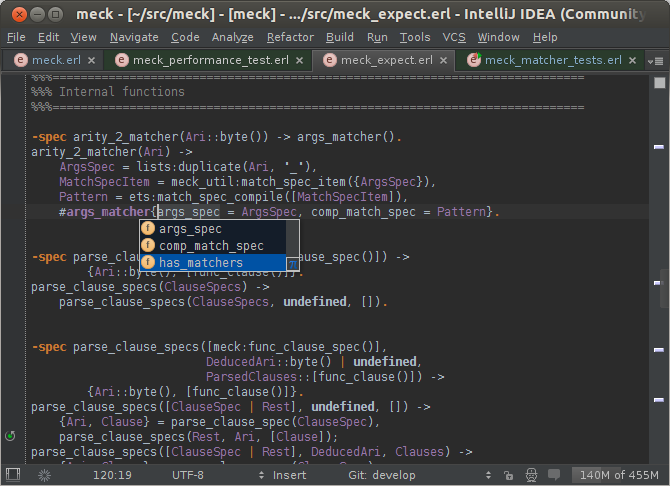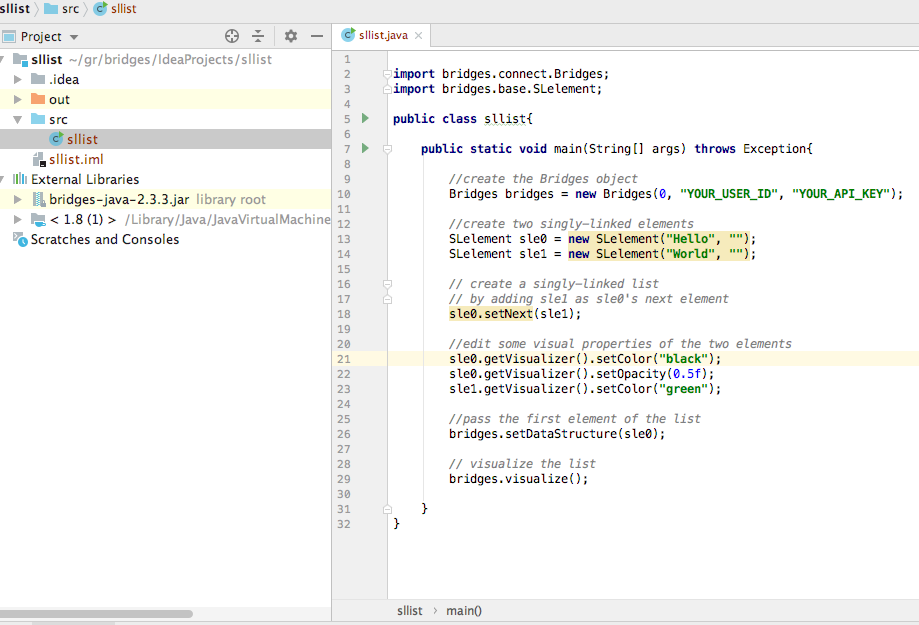

- INTELLIJ KEY STRUCTURE HOW TO
- INTELLIJ KEY STRUCTURE CODE
- INTELLIJ KEY STRUCTURE SERIES
- INTELLIJ KEY STRUCTURE WINDOWS
In addition to the icons that take you to the superclass, IntelliJ IDEA provides the icons to navigate to the corresponding method definition in the derived class, so you’re able to jump in both directions: up and down.There’s more to JavaScript development than just making code. If you can jump up through the hierarchy of your classes, why can’t you navigate down? Few IDEs provide such option, and IntelliJ IDEA is one of them. This action lets you jump up in one move so you don’t even have to touch your mouse. In addition to that, IntelliJ IDEA has a dedicated action called Super Method, available via Ctrl + U (Cmd + U for OS X). By clicking such icon, you can navigate to the corresponding method definition in the superclass (or interface). In most IDEs you can see a special icon on the gutter next to the method definitions.

Jump up the hierarchyĪnother frequent pattern is when you need to jump up through the class hierarchy for the current method (or for the entire class). If a class doesn’t have any tests yet, the action helps you create one. IntelliJ IDEA is able to recognize the tests that are related to a particular class, and offers the action called Go to a test, mapped to Ctrl + Shift + T (Cmd + Shift + T for OS X) that lets you navigate from any class to its tests and vice versa:
INTELLIJ KEY STRUCTURE CODE
What other common navigation pattern do we face when writing our code (especially, when we want to make sure our code works as expected)? We navigate between classes and corresponding unit tests.
INTELLIJ KEY STRUCTURE WINDOWS
Switching to the editor by hiding all tool windows is available via another shortcut: Ctrl + Alt + F12 (Cmd+ Alt + F12 for OS X). The tool window you’re switching from preserves its visibility state in this case. One of the trickiest features that not everyone is aware of, is switching the focus to the editor (from any other place) by pressing Escape. The Changes tool window: Alt + 9 ( Cmd + 9 for OS X).The Project tool window: Alt + 1 ( Cmd + 1 for OS X).Make sure you remember at least these shortcuts: This is very convenient and lets you completely get rid of the mouse: whenever you need a tool window or want to get back to the editor, just press the shortcut. After pressing this shortcut when the focus is within the tool window, it gets hidden and your focus moves back to the editor. By pressing the corresponding shortcut, the tool window gets visible and takes the focus. Most tool windows in IntelliJ IDEA are assigned to handy shortcuts. Using this action you’re able to navigate over the entire project structure create and change files, see its content, and many other useful things. To activate the power of the navigation bar, call the Jump to navigation bar action via Alt + Home (Alt + ↖ for OS X).
INTELLIJ KEY STRUCTURE HOW TO
New users usually think that it’s just a breadcrumb, more experienced developers know how to make do almost anything you may want. Senior IntellIJ IDEA users know a much better one: the navigation bar. However, the project tree, in fact, is not the best option. Actually, this is why it’s so easy in IntelliJ IDEA to switch between the project tree and the editor. Some people may argue that they also need to see the project tree, to understand the context they’re in, or to have a chance to quickly change it. It’s very helpful to accept the fact that most of your time the editor (and the code) is the only thing visible on your screen. When you use this action the next time, the IDE will remember your preference. To call this action just press Ctrl + E (Cmd + E for OS X). Once you get used to it, you’ll start using it for most of your navigation operations. This clearly explains why the Recent files action is such a heavily-used feature among IntelliJ IDEA users. If you pause for a moment and think about your navigation patterns, you’ll notice that most of the time you work with a finite set of files. Today’s article focuses on the features that let you navigate between project files, blocks of code, and UI elements such as tool windows, editor tabs, etc. Most of your time is spent in the code editor, and navigation is just a means that helps you get from one location in the code to another without wasting too much time. One of the fundamental things you, an IntelliJ IDEA user, need to understand to be able to harness all its power, is that this IDE was designed to keep the focus on the code.

INTELLIJ KEY STRUCTURE SERIES
Continuing my series of articles where I highlight the top IntelliJ IDEA features (earlier I blogged about the top code completion and refactorings features), I’d like to talk about navigation, which is another productivity-boosting function of an IDE that saves you lots of time, provided, of course, you’re using it right.


 0 kommentar(er)
0 kommentar(er)
